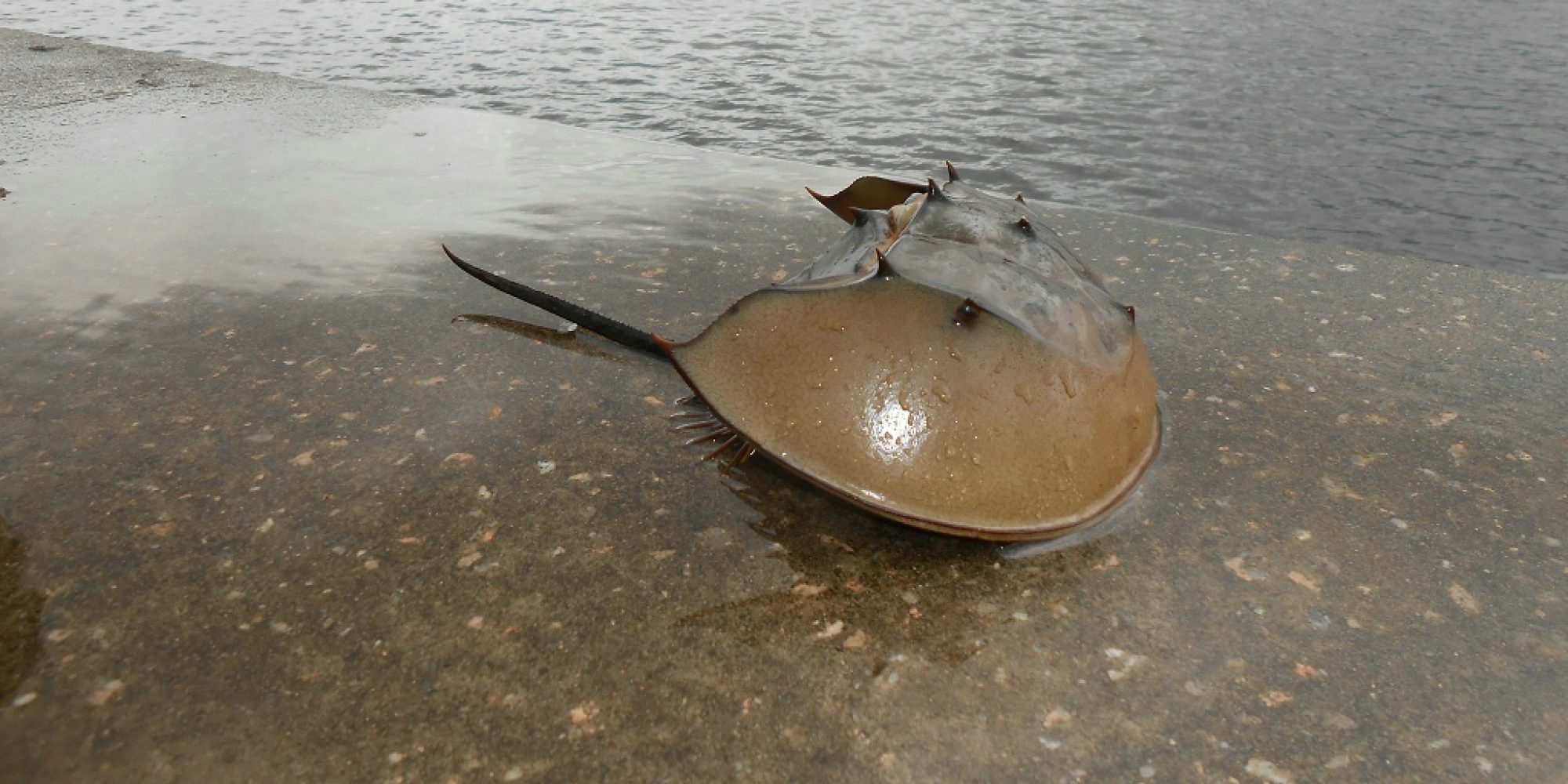The body of the horseshoe crab can be divided into three parts: prosoma (carapace), opisthosoma (abdomen) and telson (tail). They leave three parallel traces on the mudflat when they are crawling on it.
The main difference between the Chinese horseshoe crab (Tachypleus tridentatus (TT)) and the mangrove horseshoe crab (Carcinoscorpius rotundicauda (CR)) is that TT has a triangular shape △ telson with spine while CR has an oval shape ○ telson and smooth.
Besides, TT has a row of hard spikes on the two sides of the opisthosoma, and there are three tooth-shaped spines protruding from the end of the abdomen (one in the middle above the tail and one on each of the left and right sides), so it is also known as the tri-spined horseshoe crab. CR, on the other hand, has only one spine in the middle.



